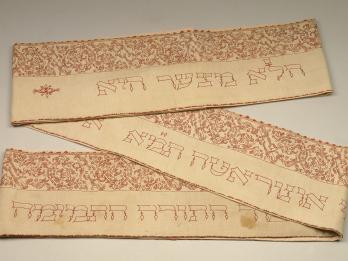Letter to His Bride
Honorata Foa
Salamone Candia
ca. 1590
Most magnificent and honored bride, my lady I gaze upon you:
Since I left Piacenza, I can honestly say that I am far away from my life. Oh, how can I live, and how can I hold up my limbs when I am so far from my heart? Oh, my life, I am nothing without you but a[n empty] man. However charming each conversation may be, I am still in solitude without you. Every song while we are apart goes from sweet to bitter lament, spring turns to winter, the dawn to evening, laughter to tears. Eating is painful, sleep torments me, lying down tires me, rising up is anguish. I do not desire to smile without you. My lady, when I listen, I do not hear if the speech is not about you; when I sleep, I dream of you; when I think of you, I wish you well; when I desire, I imagine you. Oh, how many times have I desired, and do desire, to be the mirror you look into and the tie that binds your hair. I thought that being close to you would satisfy my desire to serve you, but your presence holds me like gold a miser. And likewise the opposite: I thought to be apart from you would comfort me, but this was the rest of a helmsman far from a safe port. Yet, my lady, my honored wife, I would endure many tortures if your goodness would save me. If my faculties do not merit this, my great love merits it, and if my meager understanding does not merit it, my firm affection merits it. And to conclude, I humbly kiss that hand of snow, which if it wanted to, could bless me with a single letter. But I don’t kiss it for fear of what my sighs would do to the words.
Yours affectionately and forever most devoted to serving you,
Salamone Candia
Credits
Published in: The Posen Library of Jewish Culture and Civilization, vol. 5.





